Welcome to the world of polyculture, an approach to gardening that embraces diversity and mimics natural ecosystems.
The Comprehensive Guide to Maintaining Grasses: Native Australian Ornamental Grasses
Welcome to our comprehensive guide on ornamental grass maintenance, specifically focusing on a unique and diverse range of native Australian varieties. When it comes to maintaining grasses, there’s a world of difference between a well-tended plant and one left to its own devices.
Grasses can be broadly divided into two categories: clumping and running. Clumping grasses grow in tufts and maintain a compact growth pattern, while running grasses spread outwards using stolons or rhizomes, often covering large areas if unchecked.
We’ll delve into the intricacies of ornamental grass maintenance, from fertilising and watering to pruning and beyond. We won’t be focusing on turf maintenance – that’s a whole other beast!
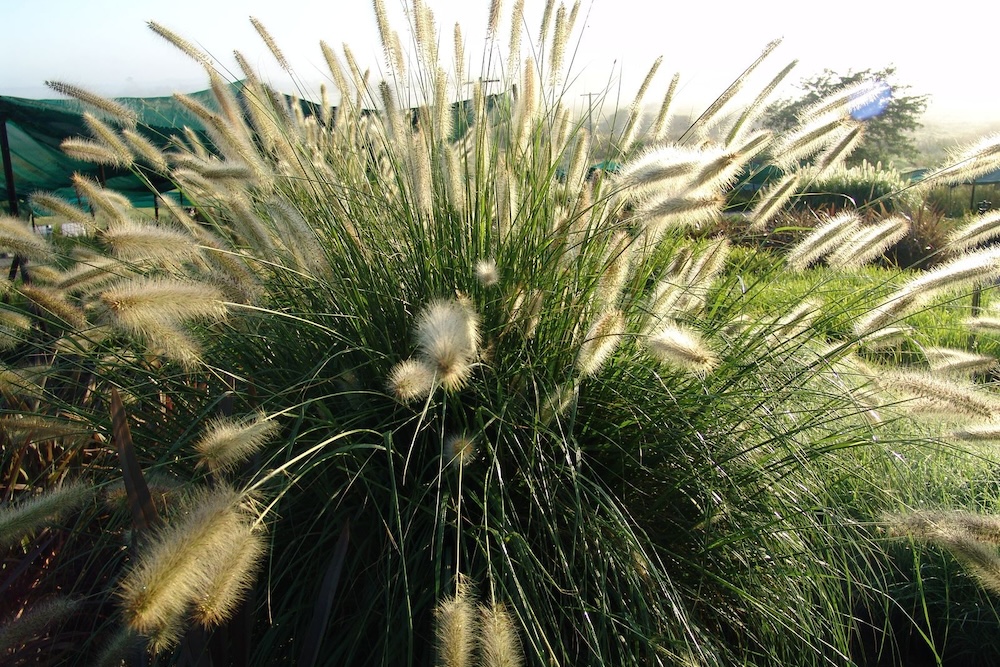
A Closer Look at Native Australian Grasses
Native Australian grasses are a class apart. Adapted to Australia’s diverse and often harsh climate conditions, with many claiming unique traits such as drought-tolerance, fire adaptation, and an ability to thrive in nutrient-poor soils.
Popular native Australian grass varieties include Pennisetum spp. (foxtail grass), Poa spp. (common tussock-grass), Themeda triandra (kangaroo grass) and many more. Each of these grasses brings a distinctive aesthetic to landscapes and gardens, with their unique textures, colours and growth forms.
Why Choose Native Australian Ornamental Grasses?
Grasses add immense aesthetic value to landscapes, softening hard lines and providing a sense of movement and texture. Their flowers can be every bit as beautiful as a daisy or a callistemon, and they dance in the wind to add a kind of beauty that’s hard to achieve with any other type of plant.
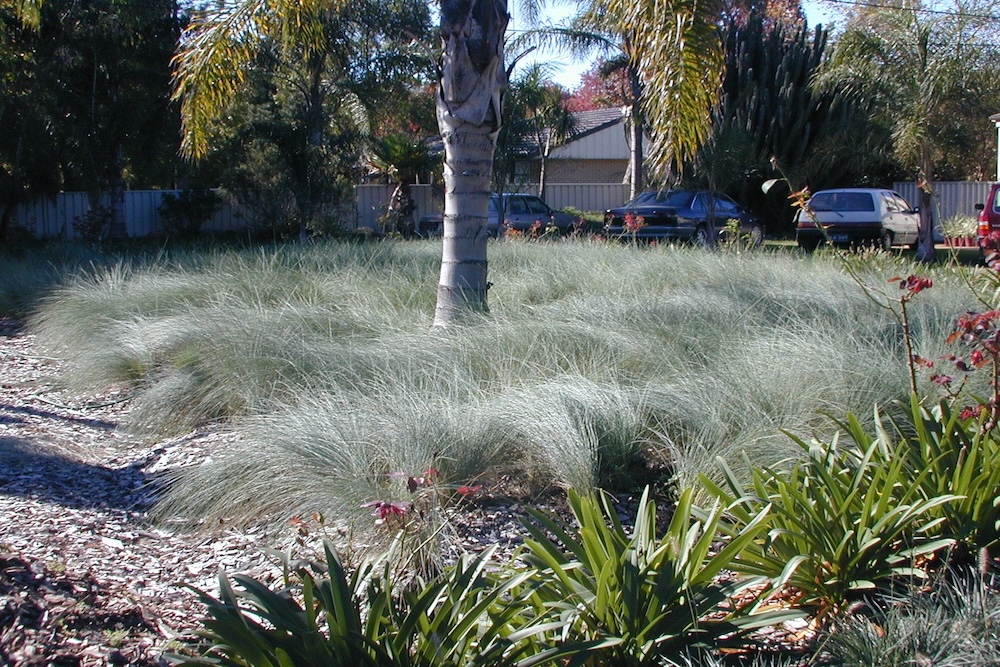
Whether they’re clumping varieties like Pennisetum, Poa and clumping bamboos, or running grasses like other types of bamboo and Imperata, they play significant roles in our ecosystems.
They provide habitat for a plethora of insects, birds, and other fauna, both above and below ground. This ecological importance is often overlooked, with many assuming that grasses contribute little to local biodiversity.
Our native insects, birds, mammals and reptiles can’t really tell the difference between an exotic and a native plant most of the time. It’s worth noting that there are certain cases where there’s a special “mutualistic” relationship, but generally, almost all plants are good for the ecosystem until they become weedy and choke out our native plants.
Whether you choose an Australian native or exotic grass variety, care should be taken to avoid spreading seeds and rhizomes where they don’t belong. Australian plants can become weeds just like exotic plants can.
We’ve taken care at Ozbreed to breed native grasses that aren’t invasive, so you can rest assured that the varieties in this article are safe to use in your garden as long as you heed our advice with regards to the running grass variety of Imperata below.
Basics of Ornamental Grass Maintenance
Maintaining grasses involves a range of tasks, each varying depending on whether you’re dealing with clumping or running varieties.
All grasses benefit from correct watering, balanced fertilising, and careful pruning to maintain their shape and health. Clumping grasses, like Pennisetum and Poa, often need less rigorous containment strategies compared to their running counterparts but may need occasional division to keep them vibrant and prevent overcrowding.
Running grasses, including Imperata, require more vigilant management to prevent them from spreading too far and becoming invasive. This might involve installing root barriers or regularly pruning their spreading stolons or rhizomes.
Proper Watering Techniques
Watering is an important aspect of maintaining grasses, even native Australian varieties (contrary to popular belief). These grasses are often adapted to Australia’s variable rainfall patterns, meaning they can often withstand periods of dryness. However, they benefit aesthetically from periodic deep watering, especially during prolonged dry spells or in the hotter months.
The best time to water is early morning. This allows water to penetrate deeply into the soil without evaporating, encouraging deep root growth. It also means that the plants are prepared for the heat of the day, while water isn’t sitting on the leaves all night to encourage fungal pathogens.
Fertilising Native Australian Grasses
Many native Australian grasses are adapted to Australia’s often nutrient-poor soils, so they sometimes require less fertiliser than exotic species. However, you can use an all-purpose or organic fertiliser as long as the label doesn’t specifically recommend the use of a low-phosphorous fertiliser.
That’s another myth that all Aussie natives require a special native plant fertiliser – this is commonly referring to Proteaceae family members like banksias, grevilleas and hakeas.
Always follow the label’s instructions when applying fertiliser. Over-fertilising can cause excessive leaf growth at the expense of root development, making the grass less resilient to environmental stress. In extreme cases, over-fertilising can cause nutrient burn and dieback on the plant as well.
Mowing and Pruning Practices
Mowing and pruning practices for native Australian grasses depend on the specific variety. Some, like kangaroo grass, benefit from annual mowing in late winter or early spring, which removes old growth and stimulates fresh, new growth.
Pruning involves removing brown or dead plant material close to the base, usually just before the growing season. This not only improves the grass’s appearance but also promotes healthy, vigorous new growth in the warmer months. Always use sharp tools to make clean cuts and minimise damage to the plant.
You can certainly prune the grass early in the winter months, but that means that there will be a bare patch in your garden for the rest of the season. Many gardeners find the dry look of grasses in winter to be quite beautiful.
Some people burn certain grasses at certain times of the year, but that’s not something I’d advocate unless you’ve been properly trained to do so.
Pest and Weed Management
While native Australian grasses are generally more resistant to local pests and diseases, they’re not immune. Common pests include sucking and chewing insects like aphids and caterpillars. Diseases like fungal pathogens can be a problem, particularly in wet conditions.
Regular monitoring is key to early detection and treatment. Natural treatment options, such as introducing beneficial insects for pest control, can be effective and are often preferable to harsh chemical treatments. Read more about how to deal with pests and diseases naturally here.
Weeds can be a challenge, especially running grasses and varieties with vigorous seeds. Regular weeding can help keep them in check, while mulching can prevent weed germination and growth. In some cases, herbicides may be necessary, but always use these products according to the label to minimise harm to the environment and non-target plants.
Selecting non-weedy varieties is a good idea to prevent issues down the line.
How to Maintain Popular Native Grass Varieties
In this section, well’ delve into the specifics of maintaining some popular native Australian grass varieties: Pennisetum, Poa, kangaroo grass, and Imperata.
Pennisetum (Foxtail Grass)
Pennisetum alopecuroides thrives in full sun but can tolerate partial shade. It prefers well-drained soil and is relatively drought-tolerant once established. Watering should be deep but infrequent in dry periods, promoting deeper root systems. A slow-release, low-phosphorus fertiliser applied annually in spring enhances its growth. Pruning in late winter removes old growth and stimulates fresh foliage.
This grass is generally pest-resistant, but regular monitoring for common lawn pests is advisable. Don’t get this native, non-invasive Australian Pennisetum species confused with the invasive African variety (P. setaceum). They’re two completely different (although related) plants.
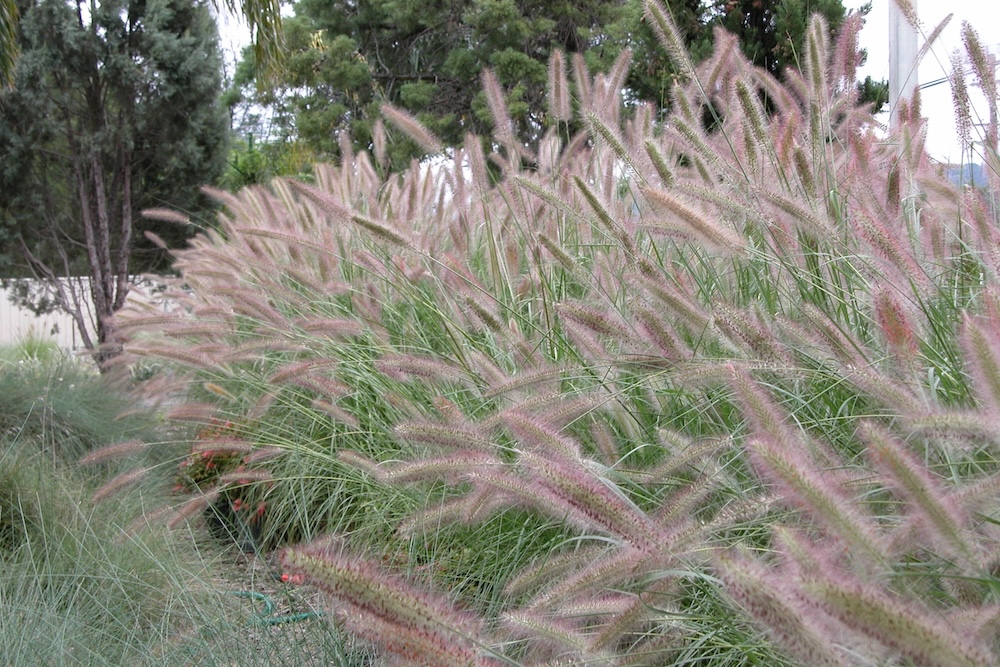
Poa (Common Tussock-Grass)
Poa is a versatile genus of native grasses that tolerate a range of conditions, from full sun to part shade and from moist to dry soils. However, they often perform best in well-drained soil with regular watering, particularly during hot, dry spells. A light application of a balanced, slow-release fertiliser in spring can help maintain its vigour.
Pruning isn’t typically required, because the foliage that dies each year is quite beautiful, however you can prune them once a year or every few years close to the base. They’re generally disease-free but monitor for pests such as aphids and mealy bugs. Interestingly, our native poas are in the same genus as the lawn weed wintergrass, also known as Poa annuis.
Kangaroo Grass
Kangaroo grass (Themeda triandra) is a hardy, drought-tolerant species that enjoys full sun. It prefers well-drained soil and requires little watering once established, making it ideal for low-maintenance landscapes.
Fertilising isn’t typically necessary, though a light application in spring can promote denser growth. Annual mowing (or pruning close to the base) in late winter or early spring removes old growth and encourages fresh shoots. This grass is typically pest-resistant but watch out for common grass diseases like leaf spot.
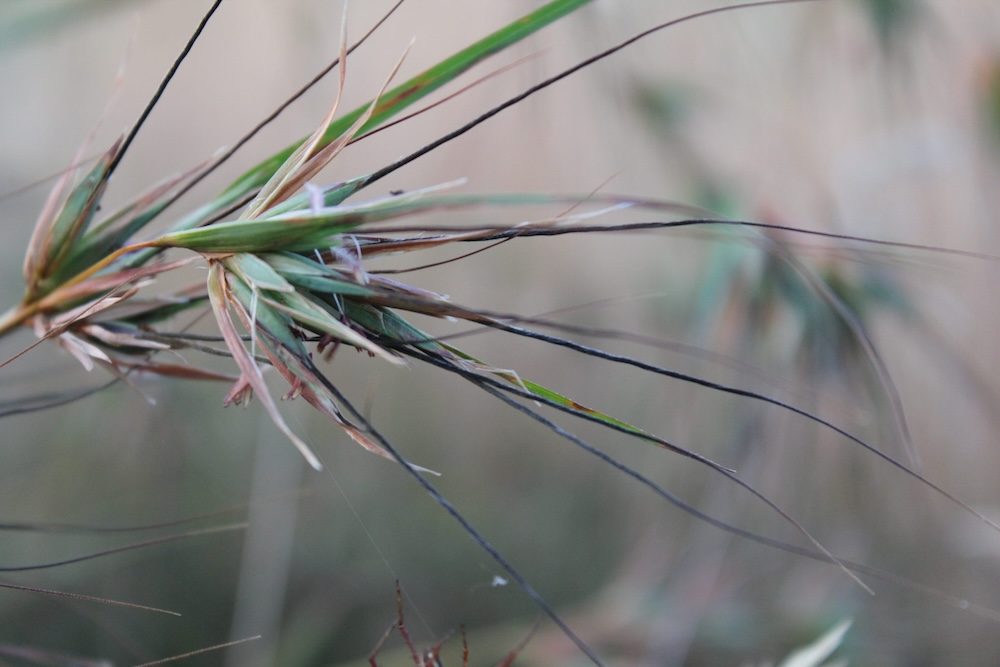
Imperata (Cogon Grass)
Imperata cylindrica is a running grass that thrives in full sun and moist, well-drained soils. Regular watering is essential, particularly during dry periods. Apply a balanced, slow-release fertiliser in spring to boost its growth.
Slash this grass once a year in late Feb to early March to achieve an abundance of white flower plumes. Monitor for pests like mealybugs and diseases like rust, especially in humid conditions.
Daniel’s Wrap
In this guide, we’ve explored the importance of grass maintenance, focusing on native Australian varieties.
We’ve discussed their characteristics, the benefits of choosing native over exotic grasses, and detailed maintenance tips for the popular varieties Pennisetum, Poa, kangaroo grass, and Imperata.

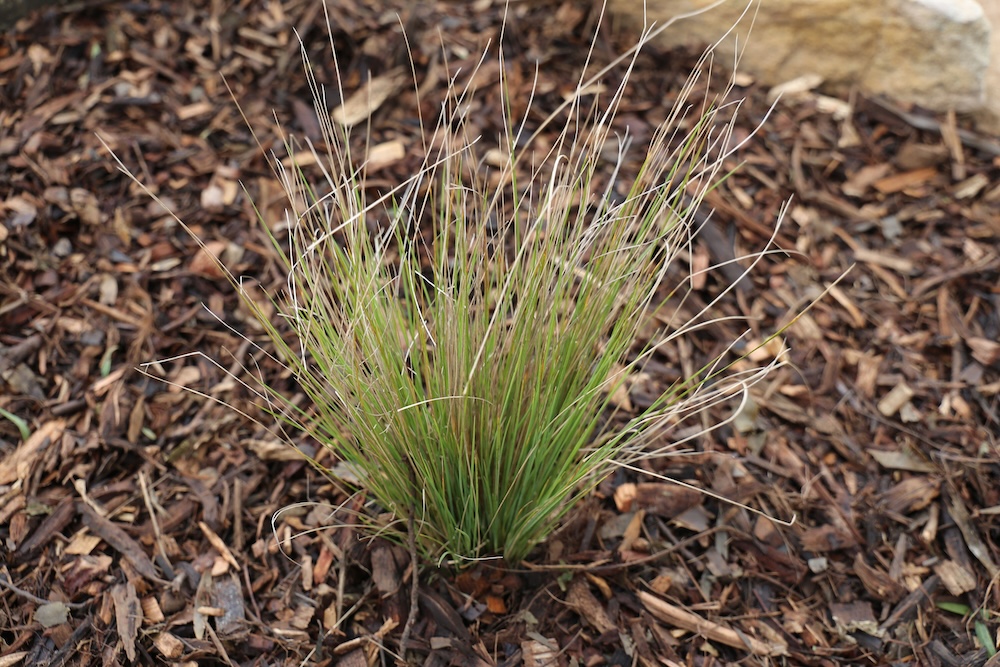
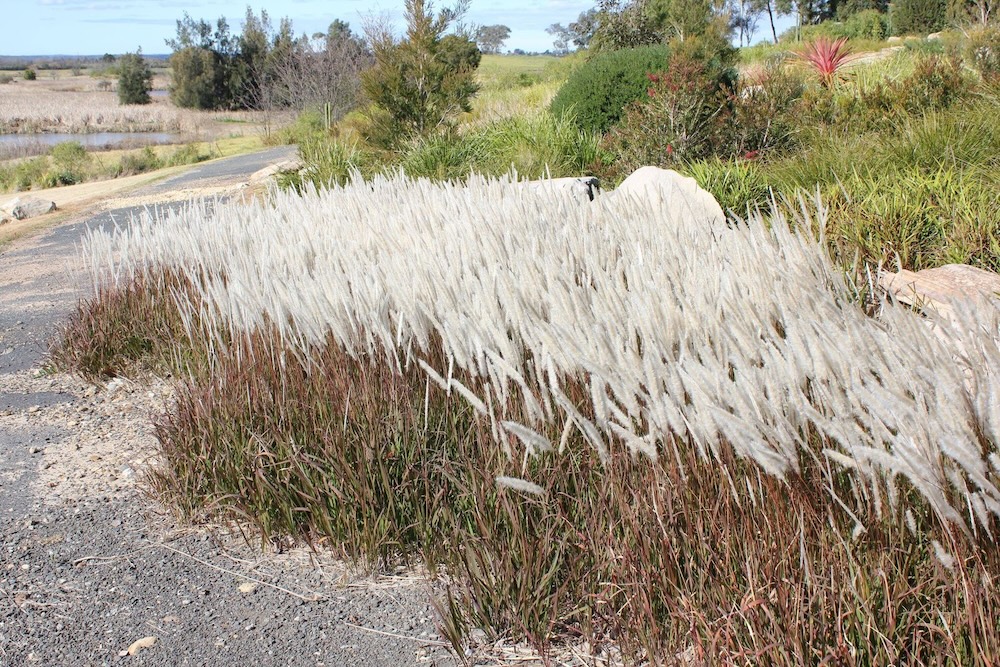
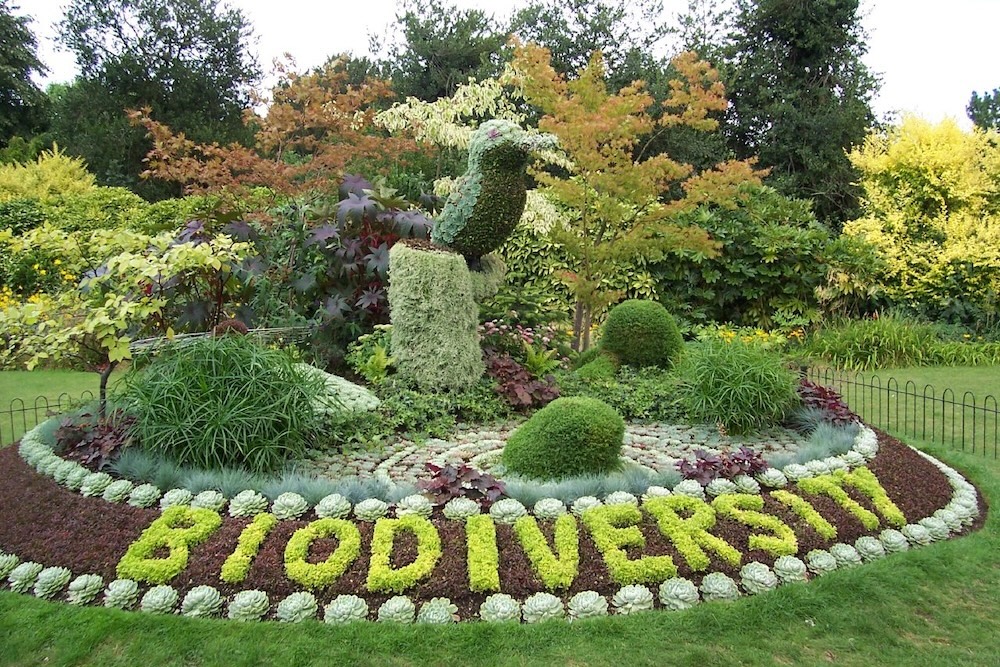
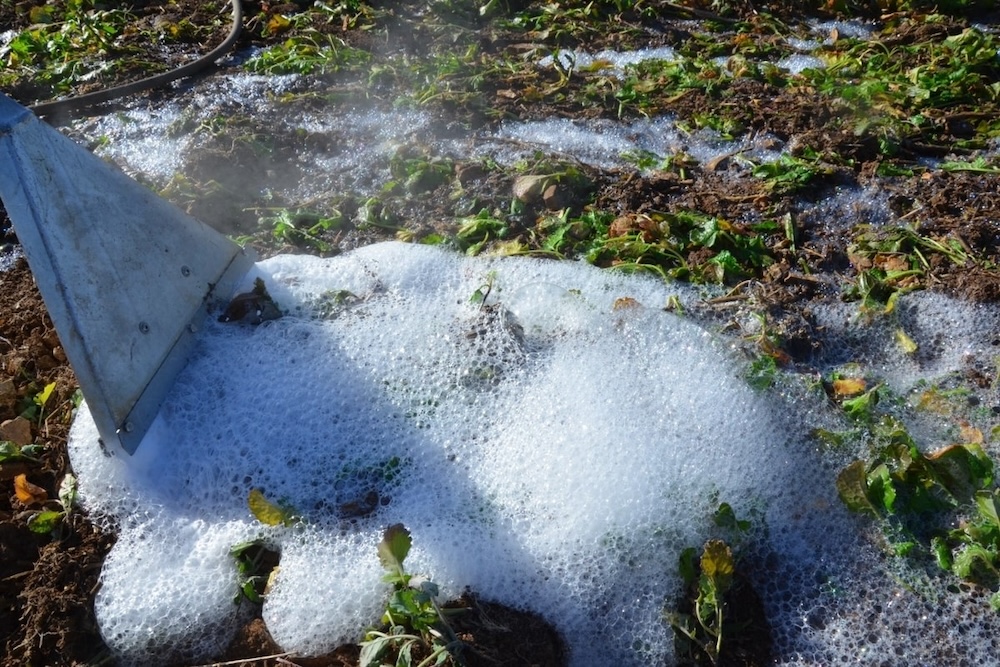
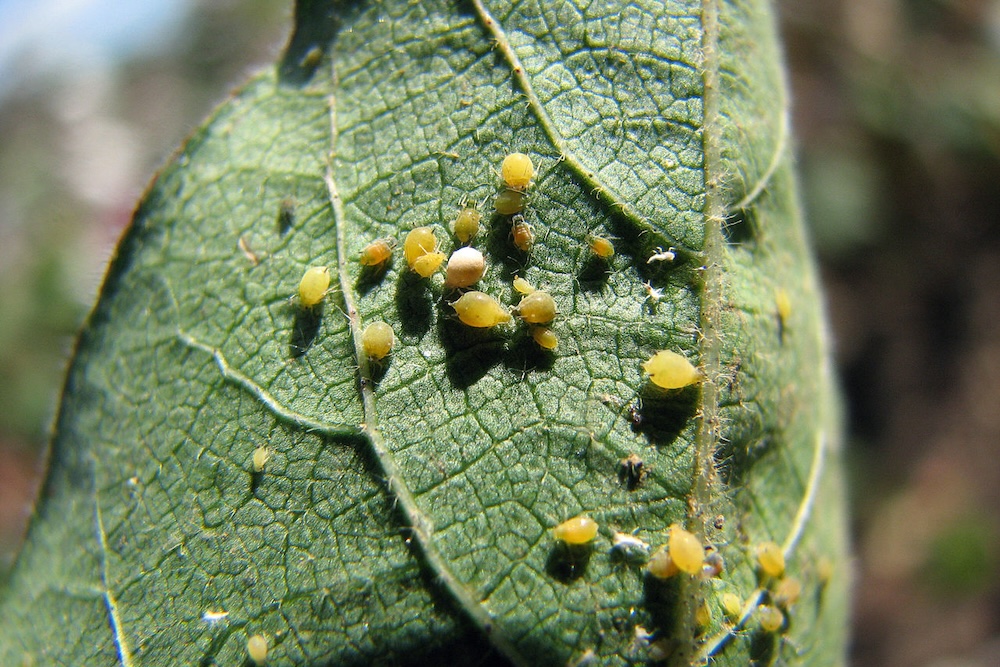
This Post Has 0 Comments